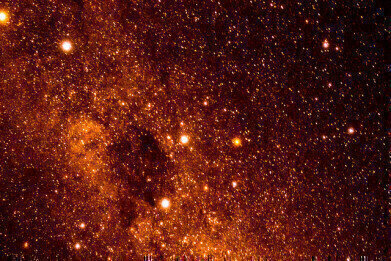News & Views
Is Interstellar Travel Closer Than We Think?
Mar 22 2016
Decidedly, interstellar space travel is a concept that’s generally reserved for sci-fi sagas. But now, physicists Gerald Jackson and Steven Howe are claiming that the dream of venturing beyond the reaches of our solar system could be closer than we think.
Together, the pair spent the last decade developing a wildly advanced antimatter propulsion probe. In theory, it could propel a 22-pound craft to a neighbouring star system known as Alpha Centauri. The journey would take 40 years, and use just 0.6 ounces of antihydrogen. Helping the craft on its way would be a vast 220 pound depleted uranium coated carbon sail, measuring in at 16 feet in length.
The immense force of antimatter
Antimatter stored in the probe would be used to propel the craft forward. It’s a complex process, which involves antihydrogen hitting the sail and forcing its uranium atoms to divide. The result of this fission is a pair of high speed atoms being forced in opposite directions. One will hit the sail to drive it forwards, while the other will be hurled into space. According to Jackson and Howe, this acceleration could see the probe reach speeds equal to 10% of the speed of light. At this rate, it would arrive at the cusp of the solar system in a decade.
Breathing new life into an old idea
The idea first came to light back in 2003, when Jackson and Howe presented drafts for their antimatter propulsion probe at the Particle Accelerator Conference. Due to lack of funding the project was never taken any further, however with a Kickstarter campaign on the horizon, interstellar travel could soon be a reality. Launched by their company Hbar Technologies, the pair hope to raise US$200,000. This will be used to fund the creation of an initial proof-of-concept design, as well as a device capable of measuring the thrust and power of the system.
Calling on the crowds
“Crowdfunding may be a good way to show interest in the project when it comes time to find bigger investors or governmental support,” Jackson commented in an interview with Forbes. “We will then need funding on the order of $100 million to actually build small prototype propulsion and power systems.”
The properties of hydrogen play an integral role in the latest Hbar Technologies project, and are also a key player in other scientific endeavours. For more information on new research being conducted into hydrogenation processes here on Earth, ‘Reactor Vessel Pressure Control and Data Logging’ is an interesting write up. It looks at the latest electronic pressure and thermal mass flow controllers from Bronkhorst, and how they can be applied for low flow lab reactor systems, as well as for high flow industrial applications.
Image via Flickr Creative Commons. Photo credits: Massmo Relsig
Digital Edition
LMUK 49.7 Nov 2024
November 2024
News - Research & Events News - News & Views Articles - They’re burning the labs... Spotlight Features - Incubators, Freezers & Cooling Equipment - Pumps, Valves & Liquid Hand...
View all digital editions
Events
Nov 18 2024 Shanghai, China
Nov 20 2024 Karachi, Pakistan
Nov 27 2024 Istanbul, Turkey
Jan 22 2025 Tokyo, Japan
Jan 22 2025 Birmingham, UK




.jpg)














